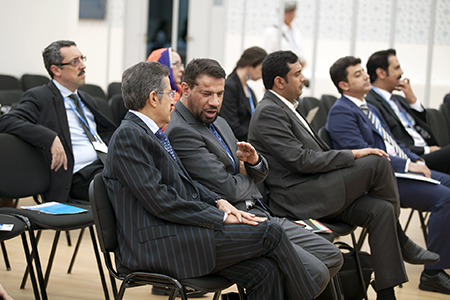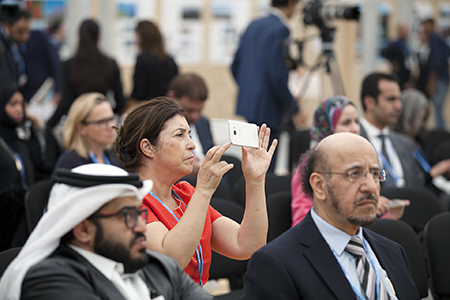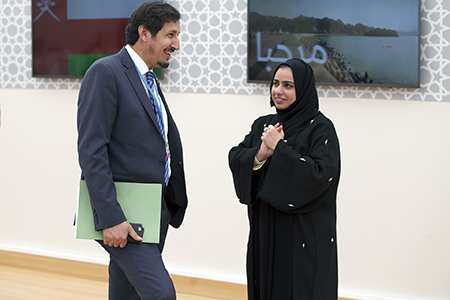| | | |
The event was moderated by Nour Shihabuddin, Saudi Aramco.
Nasser Al-Ghamdi, Saudi Energy Efficiency Center (SEEC), noted that as the country’s energy intensity continues to rise, its energy consumption efficiency has worsened. He stressed the importance of demand-side management and optimized energy use as critical tools to address this challenge. He noted that SEEC has issued 18 energy efficient standards for the buildings sector, and an additional three for transportation.
Mohammad Abusharifah, Saudi Aramco, highlighted Saudi Aramco’s Lead by Example Initiative as a model of energy efficiency solutions. He said that the initiative has saved the equivalent of one million barrels of oil and aims to reduce greenhouse gas (GHG) emissions 35% by 2020.
Mohammad Alrashdi, Saudi Basic Industries Corporation (SABIC), highlighted SABIC’s sustainability initiatives, including completion of an energy management system in 2016. He underscored SABIC’s operational achievements since 2010, including reductions of 7.8% GHG emissions, 8.1% energy intensity and 11% water intensity. He stressed that SABIC’s objective is to reduce GHG emissions by 25% by 2025.
Abdulla Al Minhali, Abu Dhabi National Oil Company (ADNOC), UAE, noted that the UAE and ADNOC Group are aligned with global efforts to abate climate change. He highlighted the Al-Reyadah Project, a new carbon capture plant, which will sequester 800,000 tons of CO2 per year. He underscored ADNOC’s target to reduce energy consumption by 10% by 2020.
Maytha Al-Naimi, Kahramaa, Qatar, highlighted Kahramaa’s Tarsheed programme, which encourages sustainability in all national energy sectors. She said the programme’s target is to reduce electricity use by 20% and water use by 30% by 2020. She emphasized Kahramaa’s special initiatives, including solar PV installation and wind and dust measurement pilot projects.
|
| | | |
| | | |
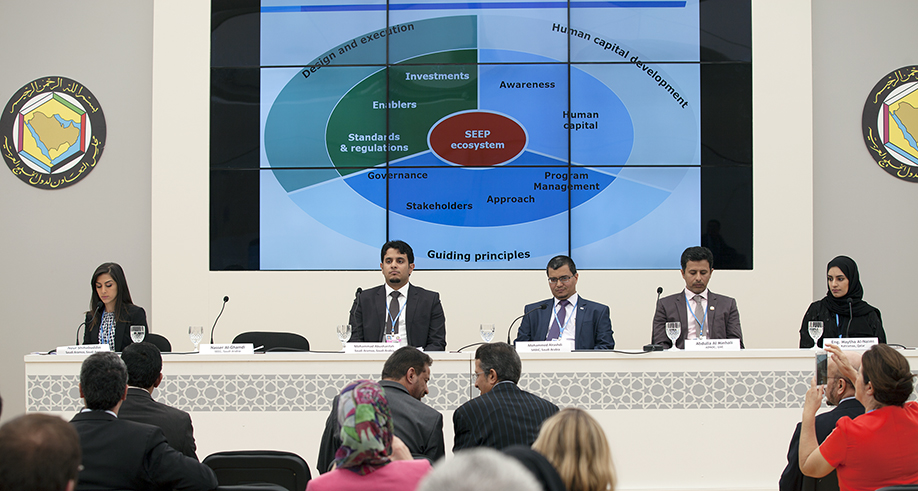
(L-R): Nour Shihabuddin, Saudi Aramco; Mohammad Abusharifah, Saudi Aramco; Mohammad Alrashdi, SABIC, Saudi Arabia; Abdulla Al Minhali, ADNOC, UAE; and Maytha Al-Naimi, Kahramaa, Qatar
|
| |
|
| | | |
|
| | | |
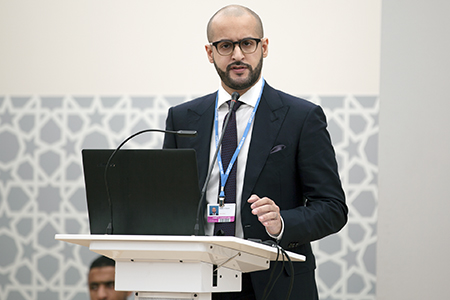
Nasser Al-Ghamdi, SEEC, Saudi Arabia, underscored that following a business-as-usual scenario, Saudi Arabia could double its oil consumption to 8 million barrels per year. |
| | | |
|
| | | |
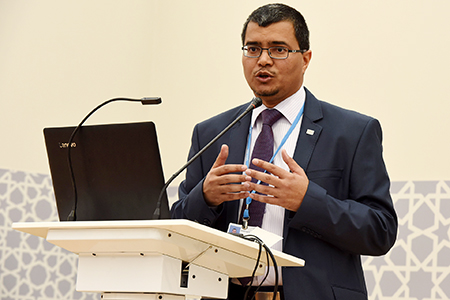
Mohammad Alrashdi, SABIC, Saudi Arabia, said that SABIC has reduced flaring emissions by 40% since 2010. |
| | | |
|
| | | |
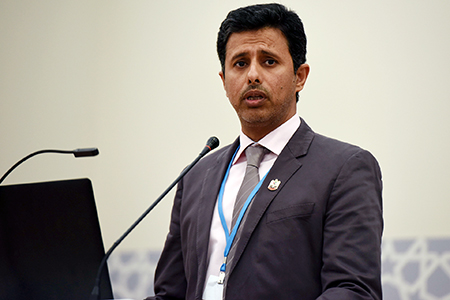
Abdulla Al Minhali, ADNOC, UAE, noted that ADNOC manages the 7th largest oil reserve in the world. |
| | | |
|
| | | |

Nour Shihabuddin, Saudi Aramco |
| | | |
|
| | | |

Mohammad Abusharifah, Saudi Aramco, said that Saudi Aramco’s Lead by Example Initiative has saved the equivalent of one million barrels of oil and aims to reduce GHG emissions 35% by 2020. |
| | | |
|
| | | |
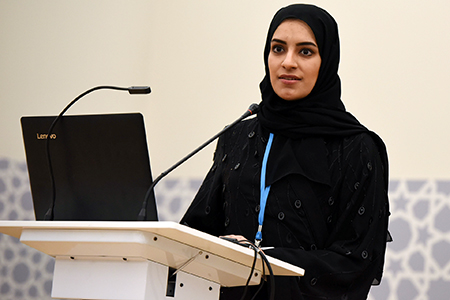
Maytha Al-Naimi, Kahramaa, Qatar, highlighted Qatar’s law monitoring system, which recorded 15,800 violations this past year. |
| | | |
|
| | | |
Participants during the session | | | | |
Contact:
More Information:
|










